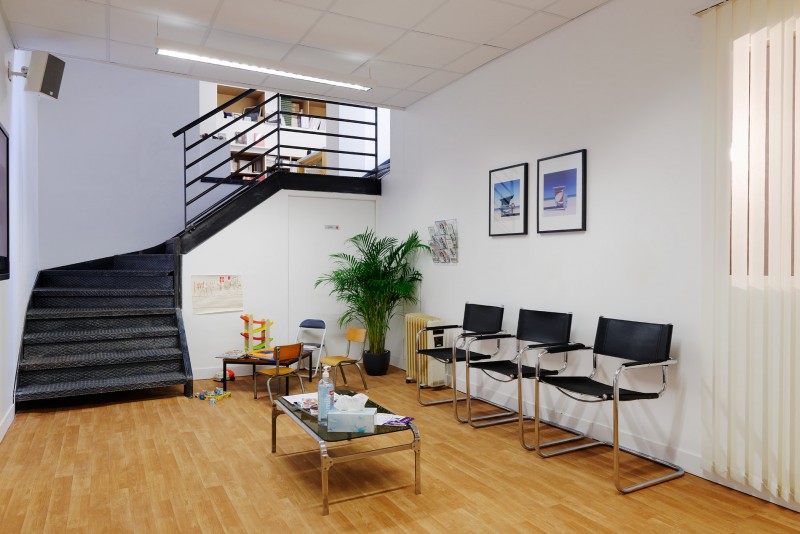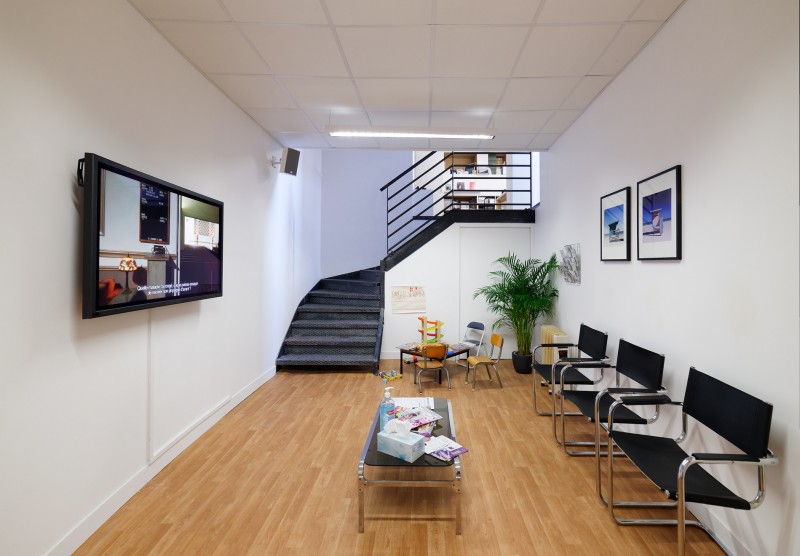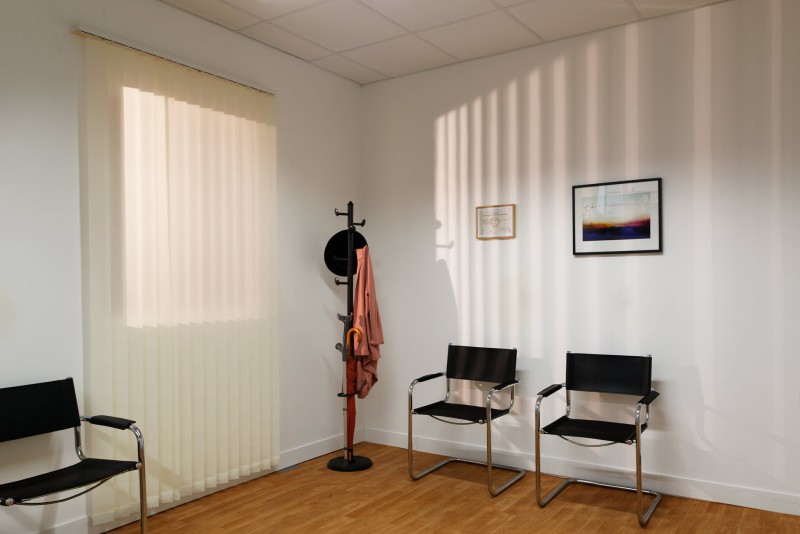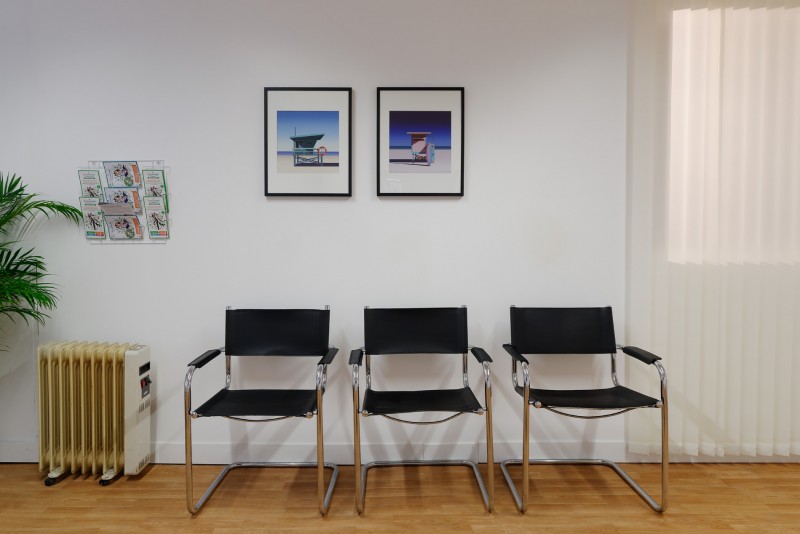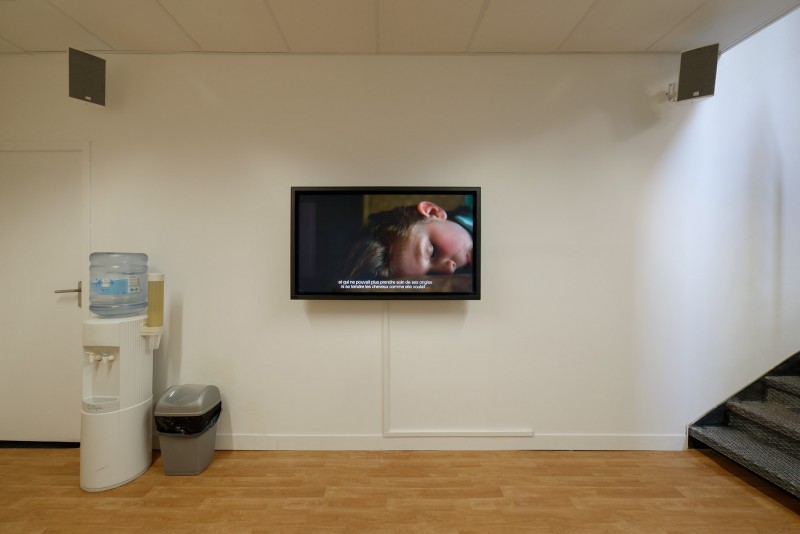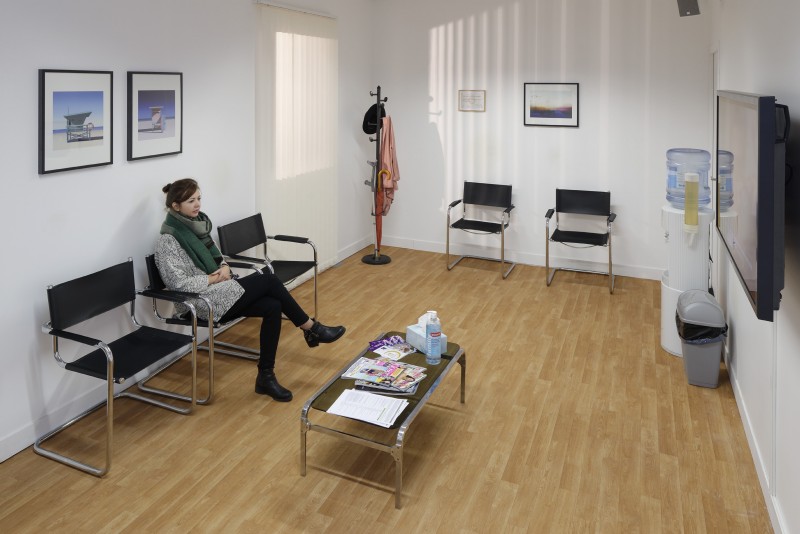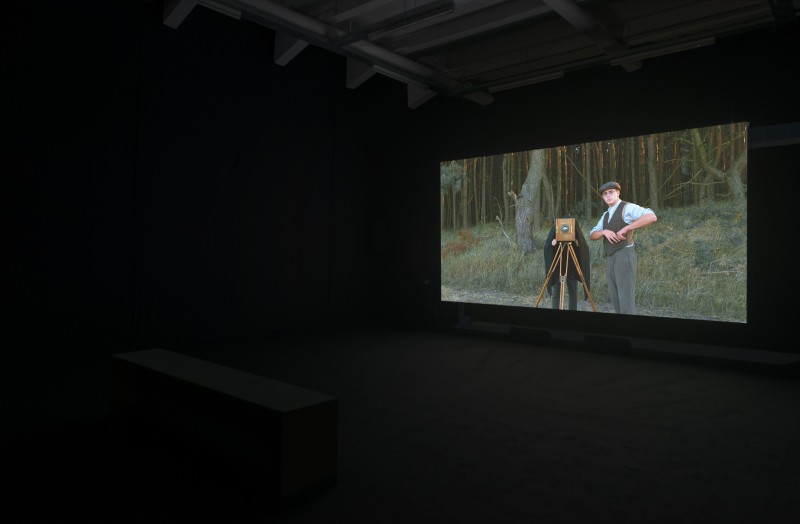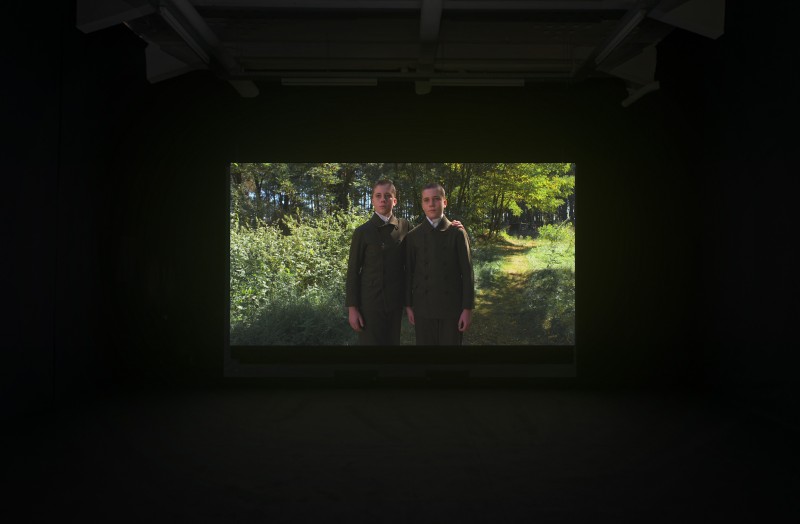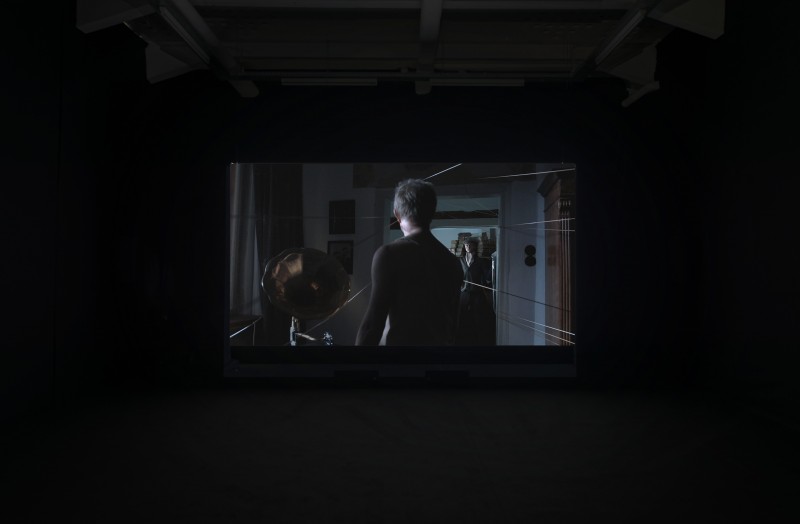Omer Fast, August
Solo show by Omer Fast
gb agency
December 3, 2016 to January 14, 2017
The work of Omer Fast examines forms of storytelling and explores their muptiple patterns. His narratives are ‘subjective portraits’ where fact and fiction meet. His stories are constructed from multiple perspectives where information is destratified, and the subject and its portrayal intertwine. The relative value of eyewitnesses is an opportunity for Fast to scrutinize the nature of an interview and to probe the processes of transmission. The process of assembly and editing produce a constant alternation from the personal to the collective, from documentary to fiction, and from social and political reality to artistic formations. While forms of media coverage continue to be a source for his work (as seen through the different media and psychological filters our society produces) Fast essentially focuses on the role of the spectator.
“Ideally, I like to think of viewers as detectives or puzzlers. The work is always incomplete prior to their arrival and they need to look at the evidence, establish a chronology, figure out motives, a logic, an interpretative theory for making sens of what happened. The crime scene is an appropriate metaphor, not least because of the artist’s inevitable mistakes and omissions, but also because of the deceptive nature of the medium as well as the gaps and distorsions involved in any transmissions.” (1)
August (2016), title of the exhibition and also of a new work by Omer Fast, intimately engages the viewer. 3D technology creates the illusion of sharing the same space as the lead character, German photographer August Sander (1876-1974) at home at the end of his life, insomniac and nearly blind. He wanders through a night filled with the loss of his son and those who were his former models. The film is composed of scenes going back and forth between recreations of life in the 1930s with his son at his side, August’s own youth, and a present (in the 1960s) where Sanders is alone and haunted by his past. Connecting the two periods, a tangle of strings inside the house help guide August, and refer back to the ones his son used to prepare his father’s photography by measuring the distance from camera to subject, making an implicit reference to the International Surrealist Exhibition of 1938 designed by Marchel Duchamp and his standard metre… In silent timeless enclosed rooms, ghosts from the past, at times terrifying at others friendly, emerge, disturbing the photographer’s night. Only a monologue by a Nazi official and model of the photographer breaks the silence, at once laudatory and critical of the work of August Sander…In the work of Omer Fast, here is the recurring skepticism of an artist’s legitimacy.
We are also presenting a piece in France for the first time, entitled Looking Pretty for God (After G.W.) (2008), shown in a particular presentation space, the waiting room of a doctor’s office. A place of isolation or itinerancy, where Fast engages the viewer through the construction of his work in which the sensory experience is omnipresent. He recently dreamt up this presentation at the Martin-Gropius Bau where three waiting rooms accompany the works of his solo exhibition: in a doctor’s office, an immigration office, and a departure lounge, places where Fast spends many hours working on his creative pursuits.
Looking Pretty for God (After G.W.) uses the words of funeral home directors to tell about the final preparations for the last public viewings of the deceased. They talk about their responsibilities to the loved ones of the dead while at the same time children appear like angels in the midst of their work.
“I use my work as a pretext to escape from my studio. This brings me into contact with strangers and into the lives of others, which are inevitably more interesting than my own. Like a vampire, I need to meet other people for sustenance.
I need to suck out their storiesand their language in order to fertilize my own. I see my works as portraits resulting from these encounters - incidently, very often portraits of workers, whether they’re adult-film performers, funeral directors or drone operators. To parphrase a famous director, without these real encounters my own fiction would collapse. (…) In any event, I think I am more interested in these figures - soldiers, refugees, adult film performers, embalmers - because they are liminal figures invetsed with special powers (or needs) to cross borders. (..) I keep returning to these subjects because they can report back from these extra- territorial zones where normal behavioural codes no longer apply.” (2)
Whether they are breaking records, psychologists, artists or magicians, some recognize, sometimes in the silence of the night, what might be considered a soul. From the beauty of images of children to impotence in the face of death, and from the rich and productive days of August to solitude at the end of his life, the exhibition exposes the fragility of human existence.
(1) (2) - Interview Omer Fast and Marina Vinyes Albes, catalogue Omer Fast, Present Continuous, 2015, Baltic, Gateshead, Jeu de Paume, Paris, Kunsten, Aalborgh
